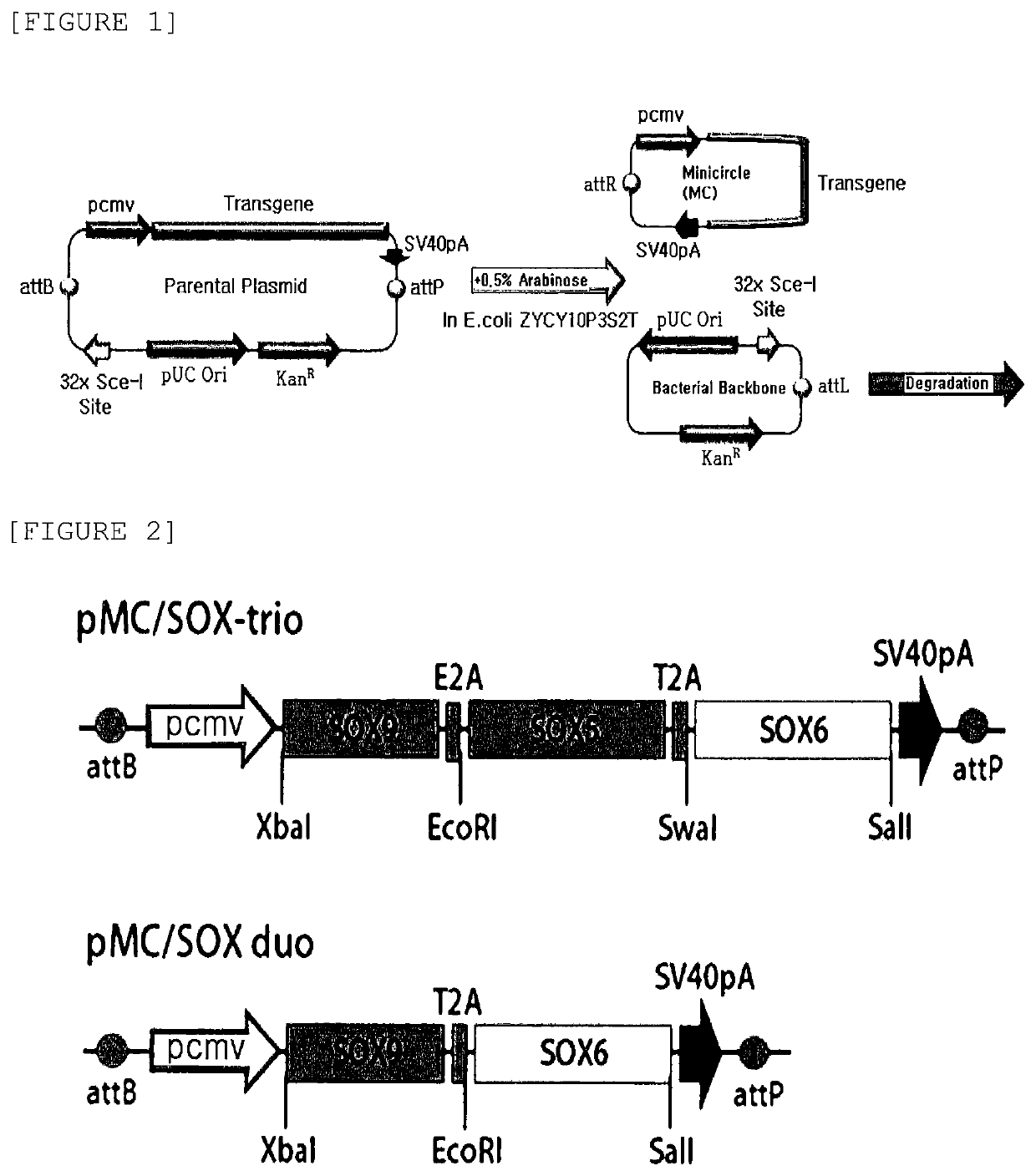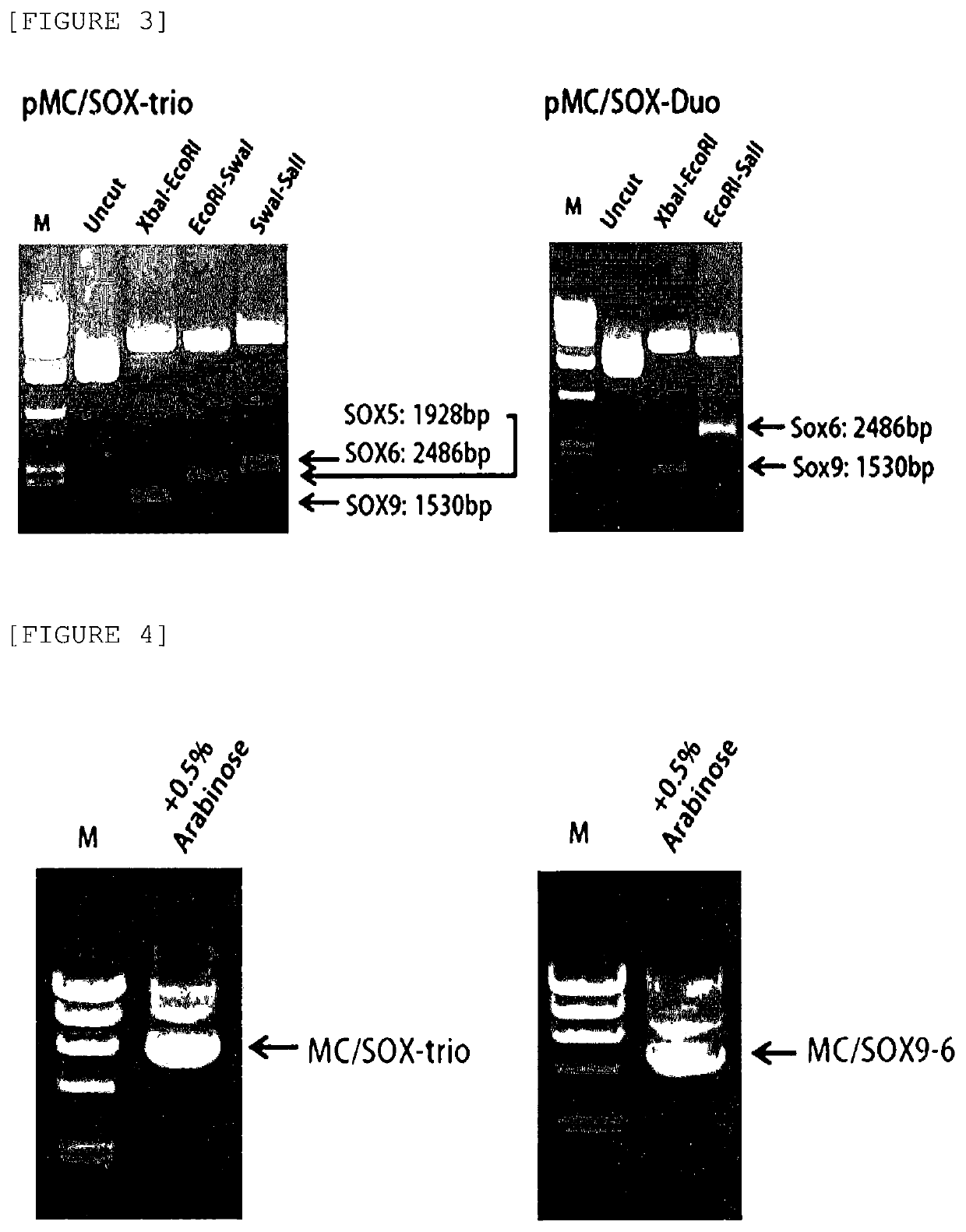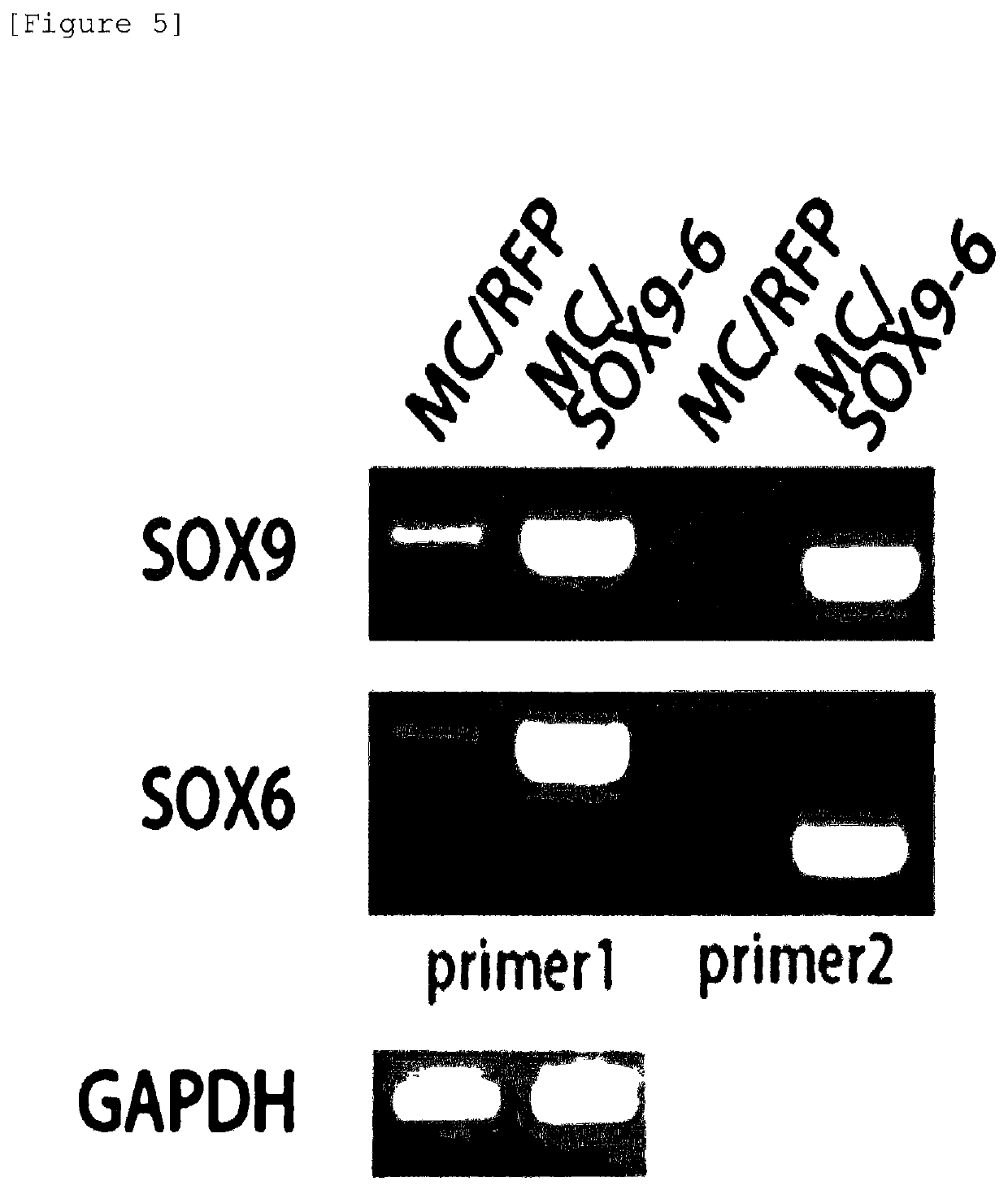Nonviral minicircle vector carrying SOX gene and construction method therefor
a technology of sox gene and minicircle, which is applied in the direction of peptides, peptide/protein ingredients, peptide sources, etc., can solve the problems of difficult to heal damaged articular cartilage, difficult to transfer sox genes into original tissue, and difficult to regenerate cartilage into original tissue, etc., to minimize the transfer of unnecessary genes and simplify the existing complicated steps
- Summary
- Abstract
- Description
- Claims
- Application Information
AI Technical Summary
Benefits of technology
Problems solved by technology
Method used
Image
Examples
example 1
ion of Non-Viral Minicircle Vector Expressing Polycistronic and Bicistronic SOX Genes
[0093]1-1. Preparation of Parental Plasmid and DNA for Transformation
[0094]In order to construct a non-viral minicircle vector of the present invention, pMC.CMV-MCS-EF1-RFP(MN512A-1), which is a vector for constructing a minicircle (MC), was purchased from SBI, Inc., and was used as a basic backbone. The vector for constructing a minicircle is homologously recombined into two vectors of an MC site including only an exogenous gene to be expressed by arabinose induction and a bacterial backbone including antibiotic-resistant genes and a bacterial origin when proliferated in bacteria in which a ΦC31 integrase and an I-SceI endonuclease are simultaneously expressed, as illustrated in the drawing of FIG. 1. Since the vector corresponding to the bacterial backbone is naturally broken down and cleared out in the proliferation process, it is possible to obtain an MC including only an exogenous gene as a fin...
example 2
ion of Minicircle Vector (DNA)
[0100]2-1. Confirmation of Transfer of SOX Gene in Constructed SOX-Trio and SOX-Duo Vectors (pMC)
[0101]Before a minicircle vector was constructed from a parental plasmid, it was initially attempted to confirm whether SOX5, 6, or 9 genes were transferred well to the pMC / SOX-trio and pMC / SOX-duo vectors constructed by the method in Example 1. For this purpose, the vectors were treated with each restriction enzyme used during the gene cloning and allowed to react, and then electrophoresis was performed.
[0102]As a result, as illustrated in FIG. 3, when both the pMC / SOX-trio vector and the pMC / SOX-duo vector were cut by a restriction enzyme corresponding to each gene, it was confirmed by a band that an insert corresponding to the size of each gene was separated.
[0103]2-2. Construction of Minicircle Vector According to Introduction of pMC / SOX-Trio and pMC / SOX-Duo Vectors into E. coli
[0104]Based on the result of Example 2-1, pMC / SOX-trio and pMC / SOX-duo vecto...
example 3
ion of Chondrogenic Differentiation Efficiency by Constructed Minicircle DNA
[0106]3-1. Confirmation of Gene Expression in Adipose Stem Cells Transformed with Minicircle DNA
[0107]Before verifying the chondrogenic differentiation efficiency of mesenchymal stem cells transformed with the minicircle DNA constructed according to the method in Example 2, first, it was attempted to confirm the expression levels of the SOX genes in the mesenchymal stem cells. For this purpose, the expression levels of the SOX6 and SOX9 genes transferred to the SOX-duo minicircle DNA were measured through RTPCR by transforming the SOX-duo minicircle DNA into adipose stem cells and extracting the RNA from the adipose stem cells.
[0108]As a result, as illustrated in FIG. 5, it was confirmed that due to the introduction of the minicircle DNA, SOX6 and SOX9 genes were overexpressed in adipose stem cells. In addition, as a result of performing Western blotting by extracting proteins from the adipose stem cells, as...
PUM
| Property | Measurement | Unit |
|---|---|---|
| weight | aaaaa | aaaaa |
| weight | aaaaa | aaaaa |
| weight | aaaaa | aaaaa |
Abstract
Description
Claims
Application Information
 Login to View More
Login to View More - R&D
- Intellectual Property
- Life Sciences
- Materials
- Tech Scout
- Unparalleled Data Quality
- Higher Quality Content
- 60% Fewer Hallucinations
Browse by: Latest US Patents, China's latest patents, Technical Efficacy Thesaurus, Application Domain, Technology Topic, Popular Technical Reports.
© 2025 PatSnap. All rights reserved.Legal|Privacy policy|Modern Slavery Act Transparency Statement|Sitemap|About US| Contact US: help@patsnap.com



